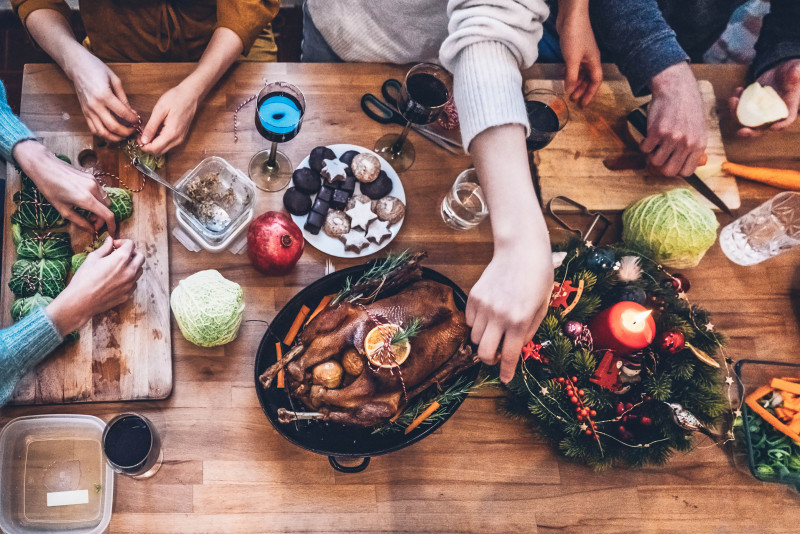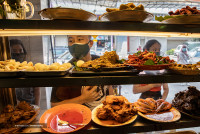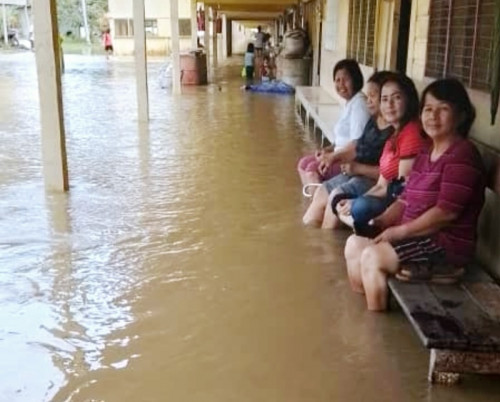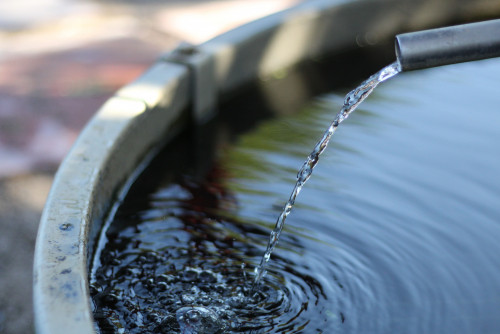WITH so many figures, recommendations and studies that all seem to contradict each other, it can be hard to know what rules to follow when it comes to reducing the environmental impact of the food we eat.
For the holiday season, it might be useful to take a step back from all these messages in order to take stock and serve up a more environmentally mindful festive menu.
Local isn't always better when it comes to saving the planet
Whether it's a turkey raised a few kilometers from home or a liter of milk from the nearest farm, choosing to buy local is an act of solidarity and support for local producers. But it also has an ecological dimension.
Touted as a solution to reduce the carbon footprint of human activity on the planet, this advice sometimes needs to be put into perspective.
The environmental cost of transporting foodstuffs is a reality: buying an avocado produced in Peru when you live in Paris has a greater impact on the planet than preferring Corsican clementines when you live in Ajaccio.
In a paper in the journal Nature Food, a team of researchers in Australia and China reported in June that global food miles represent nearly 20% of the total emissions of food production systems.
"To mitigate the environmental impact of food, a shift towards plant-based foods must be coupled with more locally produced items, mainly in affluent countries," the research concludes.
And that says it all: more than local production, it is the choice of foodstuffs that changes the game. In fact, the greenhouse gas emissions of the various food production systems should be taken into account to determine the impact our choices can have.
This is the subject of a study by the global platform Our World in Data, comparing the impact of land conversion for livestock or crop production, but also every source of emissions from a farm – from manure and tractor fuel to feed, transportation, packaging and sales.
From this perspective, beef, lamb, cheese and dairy cows are successively the most greenhouse gas-emitting food production systems, and the carbon footprint of transporting goods is minimal.
In other words, putting together a festive menu that includes a huge cut of beef – even if it is sourced close to home – has a considerable environmental impact.
However, one exception must be made, as the Our World of Data study makes clear, since food transported by air generates 50 times more CO2 than by ship per tonne-kilometer.
In food production chains, however, air freight is rarely used, representing only 0.16% of food miles.
Time to give up on the gas stove?
With energy savings on the agenda, the use of gas stoves – favoured by many chefs – is being increasingly called into question by cooks who see a way to save money, but also to improve the well-being of staff forced to cope with the heat of working with this type of appliance.
And the environmental dimension can be another reason to rethink gas stoves. Cows are often singled out for emitting methane gas when they digest food. However, this cooking appliance, deeply rooted in gastronomic culture, also produces methane.
The annual methane emissions from all gas stoves in US homes could have a climate impact similar to the level of CO2 emitted by 500,000 cars each year, according to research published by the American Chemical Society.
The researchers estimate that these stoves emit up to 1.3% of the gas they use as unburned methane. The problem is that such leaks can persist even when the appliances are turned off.
Raise a can to sustainably packaged drinks
When it comes to wines and spirits, it's difficult to recommend one beverage over another. For starters, there are the pesticides used to grow grapes, corn, barley etc. And then there's the huge quantities of water needed to produce various alcoholic drinks.
According to the Water Footprint Network, it takes 109 liters of water to produce just one glass of wine. Sources estimate that it takes between 40 and 100 liters of water to produce one liter of whiskey.
And for beer, four to six liters of water are required, although, in 2019, France's beer producers (Brasseurs de France) were pleased to report a 30% decrease in average water consumption for manufacturing and the cleaning of tanks over the past 30 years.
In total, it is estimated that 0.7% of greenhouse gas emissions are generated by the alcohol sector. In order to reduce the environmental impact of festive occasions, it could be a good idea to pay closer attention to packaging.
In a detailed survey published last month, the Revue du Vin de France highlighted the glass bottle's predominant contribution (up to 50%) to the carbon footprint of the wine industry, especially when plastic corks are included.
It could therefore be time to rethink our habits, preferring a bag-in-box solution – a cardboard box with a tap. These tend to have a bad reputation because people believe that this kind of packaging is used for poor-quality wines.
Although a bag-in-a-box cannot be used to age great wines, its carbon footprint is much better than that of glass bottles.
A three-liter bag-in-box reportedly equates to 70 grams of CO2 per liter, while glass is closer to 675 grams of CO2 per liter, according to a brand called "Collection verre après verre," which markets chateaux wines in this type of packaging.
And what about cans of wine? Hailed as a future success with growth of 13.2% by 2028, cans are interesting for several reasons. For instance, aluminum is entirely recyclable, and it is manufactured at a lower temperature than glass.
The fact remains that the range of beverages available in cans is extremely limited, not to mention deeply rooted traditions which prevent us from wanting to raise a can rather than a champagne flute.
Otherwise, to help reduce the carbon footprint of wine choices, it can be helpful to look for wineries and vineyards that comply with the specifications of organic agriculture, for example, or look for biodynamic or natural wines. – ETX Daily Up, December 17, 2022









__founder_of_Kintry__and_Ida_Faizura_popularly_known_as_Jua__star_of_Maggi_Wanita_Cukup_Berani..png)











